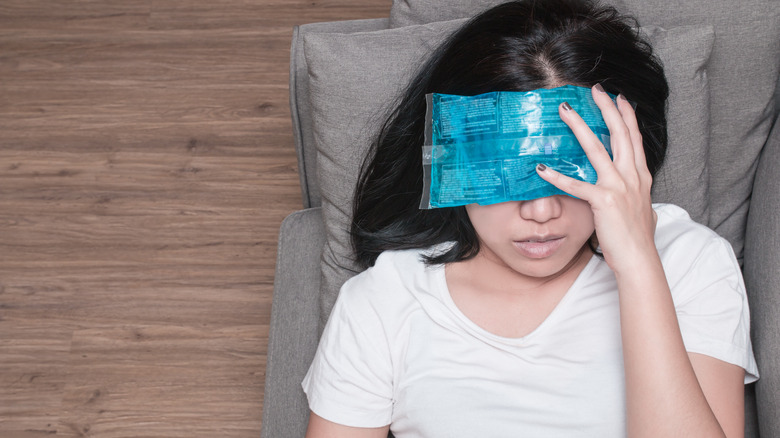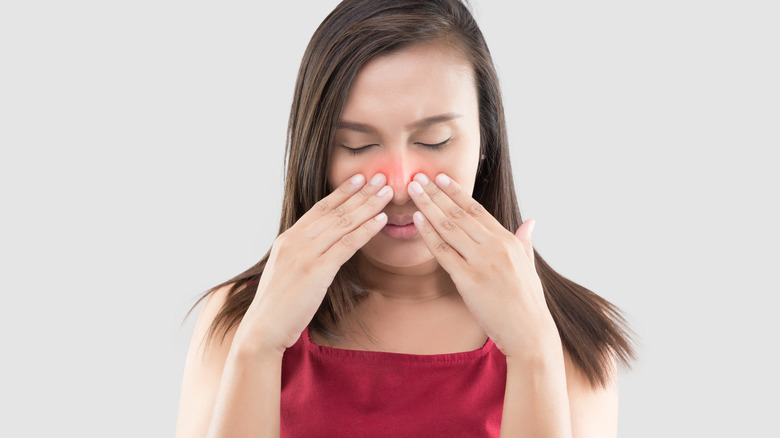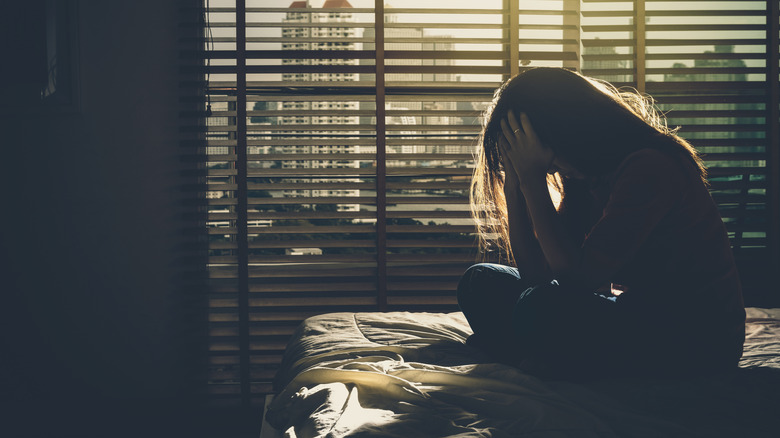How To Identify The Different Types Of Headaches
You've probably dealt with a headache or two in your lifetime, and if you have, you should know that you are far from alone. According to the National Institute of Neurological Disorders and Stroke (NINDS), people report headaches more than any other kind of pain, and they are among the most common reasons for missed work and school. Not all headaches require medical attention, and the good news is that many go away after you take over-the-counter medication. Headaches fall under two categories: primary and secondary. Primary headaches are not caused by an underlying condition while secondary ones are a symptom of something else going on. The most common headaches people experience are primary.
Headaches are considered a problem if they are severe or you experience them more than three times a month. If you suffer from frequent headaches, it's important to identify symptoms, because that will allow you to move on to suitable treatment, per NINDS.
Tension headaches
Tension headaches are the most frequent kinds of headaches, according to Healthline. These headaches can feel like a dull, tight feeling around your forehead, and sometimes the area of your head where the pain is located will be tender. Tension headaches can occur on one or both sides of the head, and, most of the time, the pain doesn't throb like it does with other types of headaches. When it comes to pain levels, tension headaches can range from mild to severe.
Causes for tension headaches vary, and can include stress, caffeine, alcohol, smoking, poor posture, dehydration, eye strain, dry eyes, fatigue, skipping meals, and not enough sleep. Treatment depends on what's causing the headache. Healthline recommends drinking water, getting enough sleep, and eating enough as a start to keeping tension headaches at bay. If these techniques don't work, then you may want to discuss other options with your physician.
Migraine headaches
Migraines are generally very painful and can be identified by a throbbing pain, typically located on one side of the head. Nausea, vomiting, and sensitivity to light and sounds are also symptoms. Sometimes, migraine pain is debilitating, and to make matters worse, it can last for days. The Mayo Clinic explains that there are two forms of migraine: those occurring with aura and without. People who experience migraines with auras usually see flashes of light or other visual disturbances about 30 minutes before the pain sets in.
Doctors don't fully understand what causes migraines. That said, some triggers include hormonal changes, stress, weather changes, and too much alcohol or caffeine. Lifestyle changes are often in order to help minimize attacks. There are two ways doctors usually go about treating migraines. One is prescribing painkillers, which work to alleviate or at least reduce pain. The other method is preventive drugs, which are supposed to stave off attacks. Treatment generally depends on how debilitating the migraines are.
Cluster headaches
With a cluster headache, a sharp pain is usually felt around one of the eyes. The affected eyelid may droop or appear swollen. The pain can reach a climax within about 15 minutes, and most of the time, cluster headaches only last a few hours. Other symptoms include teary eyes, a stuffy nose, and a sweaty forehead. As the name suggests, these headaches appear in clusters, meaning you might suffer from more than one in a single day, and you might have attacks that recur over days, weeks, or even months (via Hopkins Medicine).
While experts don't know the exact cause of cluster headaches, they think the release of histamine or serotonin in the body could be a cause. Smoking, alcohol, bright light, heat, changes in altitude, exercise, and nitrates in food are all identified as triggers. Doctors may treat frequent bouts of cluster headaches similar to how they treat migraines: with pain-relieving treatments and preventive drugs.
Sinus headaches
Another common type of headache is a sinus headache. Cedars Sinai Medical Center explains that this headache pain feels more like pressure around your forehead, eyes, and cheeks. The pain may intensify when you lie down or bend over. Sinus headaches are generally triggered by sinusitis or allergies, which means you might also have a sore throat, cough, and fever when you have one. Most of the time, pressure in the sinuses causes the pain. If you are prone to allergies or have asthma, you're more likely to develop sinus headaches.
If sinusitis is the cause of the headache, a doctor will most likely prescribe antibiotics. If the headache is the result of allergies, a corticosteroid pill or spray may be more useful. In any case, it is recommended that you identify and avoid allergens and/or triggers. Using a humidifier in your home can also keep your sinuses from drying out.
Chronic daily headaches
As the name suggests, chronic daily headaches occur almost daily, at least 15 times per month for a period of three months or longer. The National Headache Foundation explains that these headaches are unique because they can be a combination of different types of headaches including tension and migraine. It's worth noting that as much as 5% of the population may suffer from daily or near-daily headaches. These headaches are generally divided by how long they last — either shorter than four hours or longer than four hours.
Treatment for chronic daily headaches includes certain medications, but they should be used with caution since overuse can lead to more headaches. Self reports that other non-medical treatments might also be successful. Biofeedback and massage may offer relief without the use of drugs.
Some types of headaches should not be ignored and require immediate medical attention, according to the National Institute of Neurological Disorders and Stroke. These include sudden, severe headaches with a stiff neck; a headache accompanied by convulsions, fever, confusion, or loss of consciousness; or a headache that occurs after a blow to the head.






